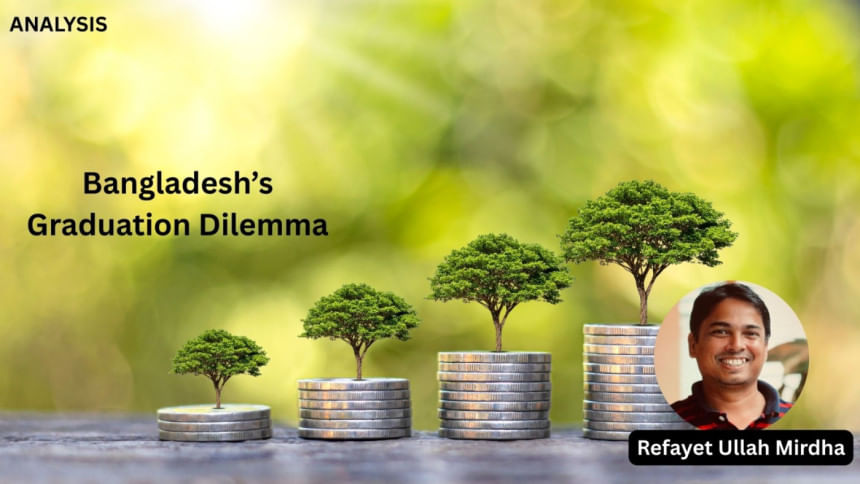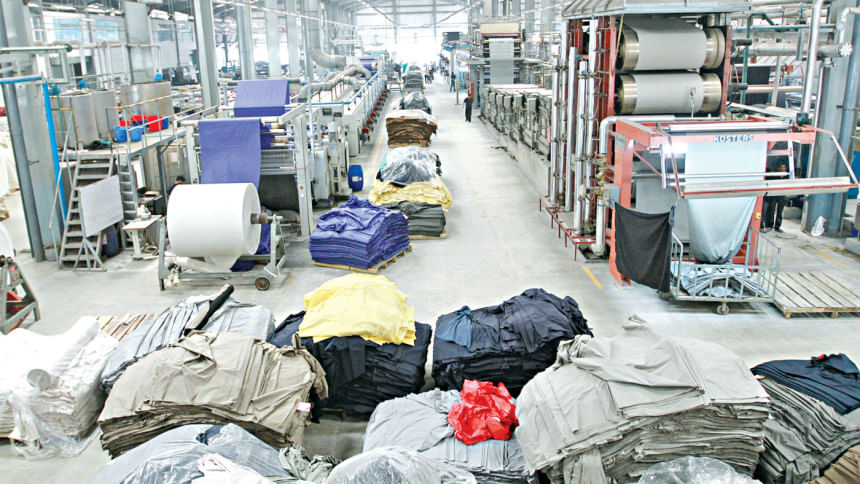The LDC graduation conundrum

The least developed countries (LDCs) have been struggling to graduate to developing nations for years. But at the same time, these countries fear losing preferential trade, exports, and employment. So, they hesitate and step back even after becoming eligible for graduation.
In almost every case, graduating LDCs have done the same, stepping back from the scheduled date of graduation.
Many of them step back by deferring graduation mainly due to their lack of readiness and fear of losing preferential trade benefits in international trade. Most of today's Third World countries emerged after the Second World War, and the majority of them are still in the group of LDCs because of their lagging economic development.
However, the task of graduating to developing and developed country status is not easy, as many nations have been struggling for years to elevate their economic status.
The financial structure, macroeconomic scenario, technology, infrastructure, logistics, human resource skills, business environment, investment climate, and educational institutions are not efficient enough for economic development in those countries.
Most troubled third world countries or LDCs are mainly busy mitigating domestic political and economic tensions and meeting the basic needs of their citizens.
The concept of LDC was adopted more than 50 years ago in 1971 by global leaders to uplift the fate of millions of poor people by delivering them quality education, health, infrastructure, sanitation and, overall, a better quality of life.
The LDC group, which began with just 25 members, eventually expanded to 50 before declining to the current 45. In more than five decades, only a handful of nations, including Bhutan, Vanuatu, Equatorial Guinea, Samoa, the Maldives, Cabo Verde and Botswana, have managed to graduate from the category.
The low level of socio-economic development in LDCs is characterised by historically weak development capacity, low and unequally distributed income, and scarcity of domestic financial resources, according to the UN.

The LDCs typically rely on agrarian economies, which can be affected by a vicious cycle of low productivity and low investment, especially as wealthier countries develop and utilise more productive farming technologies.
Generally, LDCs rely on a few primary commodities as major sources of exports and fiscal earnings, making them vulnerable to external terms-of-trade shocks. Some LDCs have been able to diversify into the manufacturing sector, though they often remain limited to products in labour-intensive industries, such as textiles and apparel.
These development constraints are responsible for insufficient domestic resource mobilisation, low economic management capacity, weaknesses in programme design and implementation, chronic external deficits, high debt burdens and heavy dependence on external financing in LDCs, the UN also said. The LDCs host about 40 percent of the world's poor. The LDCs account for 13 percent of the world's population but only about 1.3 percent of global GDP and less than 1 percent of global trade and FDI. Even if on the rise, still barely a fifth of the population in LDCs has access to the internet, the UN said.
There are currently 14 LDCs in various stages of the graduation process; four will graduate from the category by 2027. Bangladesh, Lao PDR and Nepal are due to graduate on November 24 of 2026. Solomon Islands is due to graduate on December 13 of 2027, while Cambodia and Senegal are due to graduate on December 19 of 2029. Other LDCs in the graduation pipeline are Rwanda, Uganda, United Republic of Tanzania, Kiribati, Tuvalu, Comoros, Djibouti and Myanmar.
These 44 countries benefit from exclusive international support measures (ISMs) in the areas of trade, development cooperation and participation in international organisations and processes.
PROBLEMS WITH BANGLADESH
Bangladesh was included in the league of LDCs in 1975 and, after a journey of 50 years, is now scheduled to graduate to a developing nation on November 24 next year, as the country has fulfilled all the required conditions.
The country has overcome many insurmountable challenges accrued both from domestic and external factors over the years and has reached the current level of economic development.
However, local businessmen are demanding a further deferment of graduation for six more years, up to 2032. They have already raised their demand to the government in public seminars and joint press conferences involving leaders of major business chambers and trade bodies. They say they are not ready to graduate now as they need more time to prepare.
The simple question is why Bangladesh could not take preparations until now, even though the country became eligible to graduate in 2018.
Earlier, the transition period was extended mainly because of the severe fallouts of Covid-19, the Russia-Ukraine war, historic inflationary pressure and many other domestic and international challenges.
However, the whole world has already recovered significantly from the previous severe fallouts.
Moreover, two graduating countries, Nepal and Lao PDR, are not asking for deferment although their economic status is not equal to Bangladesh.
But the nature of economic development of each of the three graduating countries is unique.
For instance, Bangladesh has a huge population and employment is a major concern, while the country's export is still mainly dependent on a single item: apparel. Other potential sectors could not perform well for different reasons.
As a result, the country faces the challenge of losing 14 percent of its exports, or $7 billion in a year, putting many garment factories' financial conditions under stress. The country's 73 percent of exports are LDC-induced, and currently Bangladesh enjoys duty-free benefits in 38 countries under this category.
Like many LDCs, Bangladesh has also failed to sign any independent free trade agreements (FTAs), either with individual countries or with trade blocs such as Asean, EU or RCEP, although the country is trying and lobbying for trade deals with major trading partners and regional blocs. So, the country's exports are in danger after graduation if it cannot make sufficient preparations for a smooth transition.
Potential export sectors such as pharmaceuticals, software, agro-processing, plastics, footwear (including non-leather), leather and tannery products, furniture and many more may lose the opportunity to grow, as they will face higher tariff rates, mostly 12 percent in different countries, except 36.5 percent to the USA, after graduation.
The businesses argue that they could not recover from the fallouts of the Covid-19, the Russia-Ukraine war, higher freight charges, historic inflation and finally the reciprocal tariff rate imposed by President Trump.
Moreover, the emerging pharmaceuticals sector is still undergoing a lot of changes as the companies are yet to produce the basic raw materials to avoid costly patent rights from foreign companies.
As a result, medicine prices may go up in domestic markets, where local companies currently serve 98 percent.
Now, some of the local medicine companies are also exporting pharmaceutical goods to the USA and European markets. It is a great achievement for a country like Bangladesh.
Perhaps, Bangladesh is the only LDC capable of exporting medicine to the USA and European markets after meeting 98 percent of its domestic demand. Even medicine has the potential to become a billion-dollar export item like garments in the future if the sector is nurtured properly.
Whatever we say today or tomorrow, Bangladesh will have to face the reality of LDC graduation, and the government cannot continue subsidies for many years. Both the government and the private sector must prepare for a smooth graduation to ensure the sustainability of the economy and trade.

 For all latest news, follow The Daily Star's Google News channel.
For all latest news, follow The Daily Star's Google News channel. 











Comments